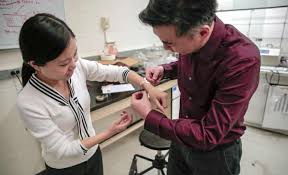
Breaking News
 Crypto Crackdown: Bitcoin Entrepreneur Entrapped by Feds
Crypto Crackdown: Bitcoin Entrepreneur Entrapped by Feds
 Chemtrail Witnesses Are Being Killed - Conspiracy or are they hiding something?
Chemtrail Witnesses Are Being Killed - Conspiracy or are they hiding something?
 BREAKING: President Trump just revealed that Vladimir Putin told him our mail-in voting...
BREAKING: President Trump just revealed that Vladimir Putin told him our mail-in voting...
Top Tech News
 Chinese Scientists Produce 'Impossible' Steel to Line Nuclear Fusion Reactors in Major Break
Chinese Scientists Produce 'Impossible' Steel to Line Nuclear Fusion Reactors in Major Break
 1,000 miles: EV range world record demolished ... by a pickup truck
1,000 miles: EV range world record demolished ... by a pickup truck
 Fermented Stevia Extract Kills Pancreatic Cancer Cells In Lab Tests
Fermented Stevia Extract Kills Pancreatic Cancer Cells In Lab Tests
 3D printing set to slash nuclear plant build times & costs
3D printing set to slash nuclear plant build times & costs
 You can design the wheels for NASA's next moon vehicle with the 'Rock and Roll Challenge
You can design the wheels for NASA's next moon vehicle with the 'Rock and Roll Challenge
 'Robot skin' beats human reflexes, transforms grip with fabric-powered touch
'Robot skin' beats human reflexes, transforms grip with fabric-powered touch
 World's first nuclear fusion plant being built in US to power Microsoft data centers
World's first nuclear fusion plant being built in US to power Microsoft data centers
 The mitochondria are more than just the "powerhouse of the cell" – they initiate immune...
The mitochondria are more than just the "powerhouse of the cell" – they initiate immune...
 Historic Aviation Engine Advance to Unlock Hypersonic Mach 10 Planes
Historic Aviation Engine Advance to Unlock Hypersonic Mach 10 Planes
 OpenAI CEO Sam Altman Pitches Eyeball-Scanning World ID to Bankers
OpenAI CEO Sam Altman Pitches Eyeball-Scanning World ID to Bankers
Cheap, Electric Bandages Speed Up Healing Process From Two Weeks to Three Days

Engineers have developed a new, low-cost bandage that speeds up healing times from nearly two weeks to just three days.
The method, which was developed by researchers at the University of Wisconsin-Madison, leverages energy generated from a patient's own body motions to apply gentle electrical pulses at the site of an injury.
"We were surprised to see such a fast recovery rate," says Xudong Wang, a professor of materials science and engineering at UW-Madison. "We suspected that the devices would produce some effect, but the magnitude was much more than we expected."
Wang and collaborators described their wound dressing method in the journal ACS Nano.
Researchers have known for several decades that electricity can be beneficial for skin healing, but most electrotherapy units in use today require bulky electrical equipment and complicated wiring to deliver powerful jolts of electricity.
"Acute and chronic wounds represent a substantial burden in healthcare worldwide," says collaborator Angela Gibson, professor of surgery at UW-Madison and a burn surgeon and director of wound healing services at UW Health. "The use of electrical stimulation in wound healing is uncommon."
In contrast with existing methods, the new dressing is much more straightforward.

 Our Natural Predators
Our Natural Predators

